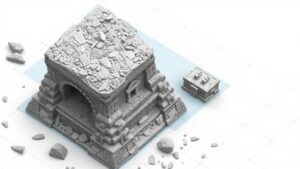Mining Early Civil Engineering Reports for Hidden Bridge Construction Artifacts
Mining Early Civil Engineering Reports for Hidden Bridge Construction Artifacts
The study of historical civil engineering reports provides significant insights into construction practices and artifacts, especially concerning bridge designs from early periods. This article presents a methodical approach to unearthing hidden artifacts documented within early civil engineering reports, utilizing historical data to enhance our understanding of bridge construction techniques in the 19th century and earlier.
Introduction
Bridges have played a critical role in the development of transportation infrastructure. The period between the late 18th and early 20th centuries saw significant innovations in bridge construction techniques and materials. But, many of the artifacts and methodologies used during this period remain hidden within voluminous and often inaccessible civil engineering reports. By mining these early documents, modern researchers can uncover valuable insights that inform both historical knowledge and current engineering practices.
Historical Context
During the 19th century, the industrial revolution brought about rapid advancements in engineering and construction. Key infrastructure projects, including the Brooklyn Bridge (completed in 1883) and the iron arch bridges such as the Menai Suspension Bridge (completed in 1826), showcased emerging techniques and materials. e projects were often documented in annual reports by civil engineering societies such as the American Society of Civil Engineers, founded in 1852, and the Institution of Civil Engineers in the United Kingdom, established in 1818.
Significance of Mining Reports
Mining these historical reports serves multiple important purposes, including:
- Understanding the evolution of bridge construction techniques.
- Identifying materials and methods used in early projects.
- Preserving the narrative of engineering advancements and its societal impact.
Methodology
The process of mining early civil engineering reports involves several systematic steps:
- Data Acquisition: Collecting copies of early civil engineering reports from libraries, national archives, and online databases.
- Digitalization: Utilizing Optical Character Recognition (OCR) technology to convert scanned documents into machine-readable text.
- Content Analysis: Conducting qualitative analysis to identify key terms related to bridge construction, including materials, design specifications, and construction methods.
Case Study: The Construction of the Thames Ironworks
One notable case is the Thames Ironworks, which was a prominent shipbuilding yard in East London. Originally established in 1837, it also became a site for bridge construction and repair. Reports from the 1860s detail the use of wrought iron and riveted connections in bridge construction, a significant advancement over traditional timber and masonry methods.
For example, a 1865 report published in the Transactions of the Institution of Civil Engineers highlighted the adoption of structural iron in the design of trusses, setting a precedent for future bridge designs across Europe and North America. This document also references the specific methods used for assembling large iron girders, revealing techniques that would influence the construction of modern bridges.
Impact on Modern Civil Engineering
Insights gained from mining early civil engineering reports can directly influence contemporary practices. Understanding the limitations and innovations of past engineering methods allows modern engineers to:
- Evaluate historical materials that may be repurposed in modern contexts.
- Learn from previous design failures to avoid similar pitfalls in contemporary projects.
- Adopt sustainable practices inspired by the materials and methods used historically.
Challenges and Limitations
Despite the potential benefits, mining historical reports for artifacts does present challenges:
- Accessibility: Many reports remain unpublished or are in fragile condition, limiting access.
- Data Quality: OCR technology is not always reliable, and human verification is often necessary.
- Interpretation: The context within which certain engineering decisions were made can be difficult to discern.
Conclusion and Future Directions
Mining early civil engineering reports is a crucial endeavor for uncovering hidden artifacts related to bridge construction and the broader evolution of civil engineering. Through systematic analysis of historical documents, researchers can gain comprehensive insights that not only enrich the understanding of past practices but can also inform present and future engineering challenges. Continued advancements in digital archiving and data analysis tools promise to enhance the efficiency and accuracy of this research approach, paving the way for deeper explorations into the rich history of civil engineering.
In summary, a commitment to preserving and studying these past records will help ensure that the legacy of early civil engineering continues to inform and inspire present and future engineers.


